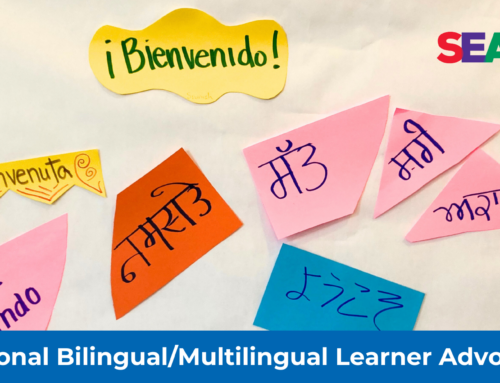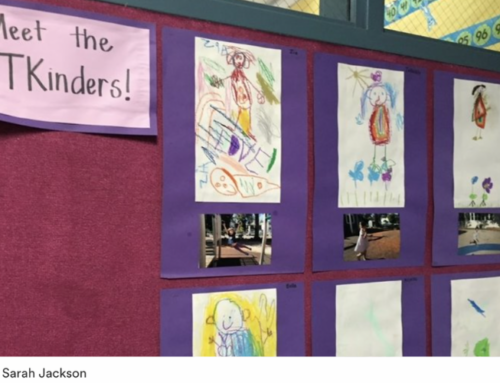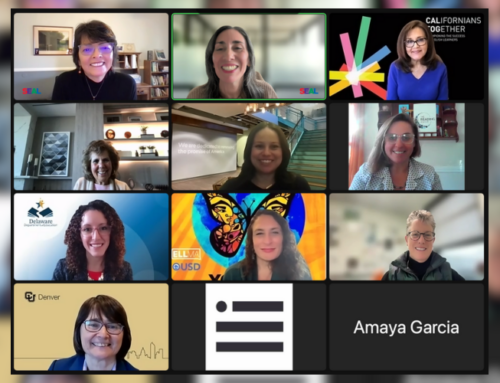By Joanna Meadvin & Jennifer Diehl
When schools across the globe were forced to close in the spring, educators scrambled to adapt their resources to best meet students’ emotional, physical, and educational needs. Without mercy, the pandemic overwhelmed our most vulnerable populations, revealing once again that society is designed to serve different groups inequitably, and is particularly rigged against people of color and those living in poverty.
Sadly, despite best intentions, schools often contribute to this cruel reality. Champions of English Learners and other marginalized communities have known for decades that the system is perfectly designed to produce the results it is getting. In the face of upheaval, the visionaries amongst us began to imagine how this pandemic might be an opportunity to transform our world. Hugh Vasquez of the National Equity Project specifically wondered, “What if we…don’t return to school as usual?” What if we use this “disturbance” to our everyday as an opportunity for great change?
Now deep into this pandemic with no end in sight, and in seeming defiance of these earlier calls to imagination and transformation, the inequities baked into our schools continue to deepen and more harshly reveal themselves, Many of us have begun to worry whether these beleaguered systems really can change? Or do they even want to?
For SEAL, the answer must be, “Yes!” And, here is how.
Of course, teachers and schools must remain committed to instructing English Learners according to research-based best practices. (See our Six Key Considerations for Supporting English Learners.)
However, after more than ten years of working with teachers, administrators, and coaches, it has become increasingly clear to us that rote implementation of strategies are, at best, mildly effective unless people with power interrogate their privilege and squarely face their culpability in a system that continues to deliver inadequate results for English Learners. Policy makers have power. Administrators have power. And, perhaps most importantly, teachers wield enormous power in their classrooms.
So, how do you REALLY support English Learners in the time of Coronavirus?
First, acknowledge the truth.
Systemic change begins with the acknowledgment that we can no longer define equitable schools as places where “every child gets what they need.” This well-intentioned platitude obscures the painful truth: Year after year, we fail miserably in our attempts to meet the needs of English Learners. Statistically speaking, English Learners have never made comparable educational gains to their native English-speaking peers and are twice as likely to drop out of high school. These children require and deserve more than children who speak English as their first language. For SEAL, putting resources where they are most needed means setting a laser sharp focus on English Learners.
Second, provide more of our most valuable resource: Time
At the very least, English Learners should get more of their teachers’ time and attention — more frequent check-ins, more targeted small group instruction, and in hybrid (blended virtual and in-person learning) models, more physical time in the classroom. Yes, when prioritizing time with students, English Learners should be at the head of the class.
Third, ensure the right teachers are in front of the kids.
In California, 2/3 of students are children of color, while 2/3 of the teaching force is white. One out of every five students in California’s is an English Learner. And while there is no available data on the percentage of teachers who are second language learners, it is highly likely to be less. This means that for many children, their teachers have enormous blind spots and implicit biases about their students’ lived realities.
Teachers must be willing to do deep personal, and oftentimes, painful work to examine these blind spots. Through professional learning and guidance from experts, all California teachers must better understand the history of racism and linguicism in our schools, and be prepared to accept their own place within the system.
Teachers must commit to teaching curricula that not only portrays history accurately, but also disrupts systematic oppression and celebrates the strength, resilience, and contributions of people of color.
School staff must create spaces and places to address the socio-emotional needs of both students and staff (especially during this time of increased upheaval and trauma). This includes scrutinizing discipline policies that disproportionately affect children of color, including how practices such as zero-tolerance and cracking down on minor offenses contribute to the “school-to-prison pipeline.”
And, schools must increase bilingual programming which necessitates active recruitment of bilingual teachers. The research has been clear about the benefits of bilingualism. Yet, this huge asset that every English Learner possesses – their home language – is cast aside by the schools, as English, the language of power, is implicitly and explicitly forced upon them.
Finally, school systems must recognize the “whole” child includes their family.
For almost a century, we have known that children cannot learn if their most basic needs are not met. Yet, English Learners, at disproportionate rates, return home every day to families and communities in crisis. Schools and district offices must create deep partnerships with social services to provide wraparound care for at-risk families which includes access to healthcare, mental well-being, technology, and food.
As Arundhati Roy writes, “Historically, pandemics have forced humans to break with the past and imagine their world anew. This one is no different. It is a portal, a gateway, between one world and the next.”
How will we walk through the portal? Our children are watching.
About the authors
Joanna’s experience in education began as a Peace Corps teacher in a small, trilingual city in Nicaragua. Seeing her Miskito-speaking students struggle with Spanish sparked a passion for supporting language learners. Joanna taught 2nd, 3rd and 7th grades in New York City, taught writing to first-generation college students in Mississippi, and college-level literature classes in California. She has an MA in bilingual/bicultural education from Teachers College in New York City, and in 2016 received her Ph.D. in Literature with a focus on language and migration from the University of California, Santa Cruz.
Jennifer has been working in the field of elementary education for over 20 years. She began her career as a classroom teacher, and then transitioned to providing professional development for teachers and administrators throughout California — specializing in early literacy, and working with English Learners. Jennifer joined the SEAL team in 2009, the second year of SEAL’s 5-year pilot. She worked closely with Dr. Laurie Olsen to design and deliver the model of training for SEAL replication. Jennifer is a certified Reading Recovery teacher and a Tier IV GLAD Trainer. She holds an MA in Education from UC Santa Barbara, and an MA in Educational Leadership and Administrative Credential from San Jose State University.









